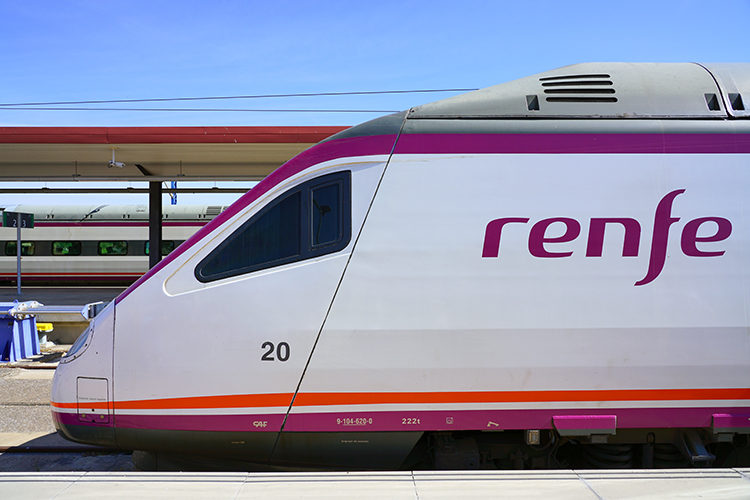Laying the foundations for seamless multimodal travel across Europe
- Like
- Digg
- Del
- Tumblr
- VKontakte
- Buffer
- Love This
- Odnoklassniki
- Meneame
- Blogger
- Amazon
- Yahoo Mail
- Gmail
- AOL
- Newsvine
- HackerNews
- Evernote
- MySpace
- Mail.ru
- Viadeo
- Line
- Comments
- Yummly
- SMS
- Viber
- Telegram
- Subscribe
- Skype
- Facebook Messenger
- Kakao
- LiveJournal
- Yammer
- Edgar
- Fintel
- Mix
- Instapaper
- Copy Link
Posted: 2 March 2021 | Luke Antoniou - Intelligent Transport | No comments yet
Intelligent Transport’s Luke Antoniou sat down with Esther Bravo, Shift2Rail’s Programme Manager, and UITP’s Daria Kuzmina, who is leading the Shift2MaaS project , to discuss the work they’re doing to make journeying through Europe a breeze for travellers.


When talking about fighting car ownership, the topic of Mobility as a Service (MaaS) is on the top of the list. The integration of different transport services into one single mobility offer in which public transport is at the epicentre, has long been named as the solution for changing customer behaviour towards more sustainable options.
The Shif2MaaS project is funded by the Shift2Rail Joint Undertaking under the European Union’s Horizon 2020 research and innovation programme, involving the European Union and the private industry working together in partnership. In early 2019, UITP (International Association of Public Transport) kicked off the EU project Shift2MaaS as Coordinator. A key part of the Shift2Rail initiative, the Shift2MaaS project aims to overcome the technical and non-technical barriers for the adoption of new MaaS platforms.
It will do this by integrating and supporting the uptake of technologies developed in other Shift2Rail projects, such as a ticket booking system, or a journey planner. All of these technologies will together enable the uptake of integrated MaaS schemes.
Let’s take a closer look at how Shift2Rail’s Innovation Programme 4 (IP4) devoted to MaaS aims to advance seamless travel across Europe.
What is Shift2Rail’s IP4 programme?
Esther Bravo: The IP4 programme is one of five different Innovation Programmes of the Shift2Rail Joint Undertaking. The first one is related to cost-efficient and reliable trains, including high capacity trains and high speed trains. The second is focused on Advanced Traffic Management and Control Systems. The third programme is focused on infrastructure, while the fourth programme is related to IT solutions for attractive railway services, and IP5 is related to technologies for sustainable and attractive European rail freight.
It is important to stress though that in IP4, we are starting from railways as the backbone of an integrated mobility service – we see railways as part of a multimodal framework. The main objective of IP4 is to create an ecosystem that allows seamless multimodal travel across Europe. The objective is to give passengers access to all travel services, from all operators, through a single Travel Companion. By travel services I mean journey planning, shopping, ticketing, navigating, and tracking, as well as customer support.
The travel companion will give access to all the services, but it will also work as a companion for the passengers. Tickets will be stored in a virtual wallet, and travellers will get real-time notifications during their journey; if there is a disruption, it will inform them and offer an alternative route to reach their destination. The companion will also offer a location-based experience, not only based on travel itself, but also tourist information services or shops within a certain station for example.
The main idea is to ease the integration of the different travel service providers to one core system. What we are trying to do is to reduce the need for the travel service providers to modify their legacy system, so that in order to join the platform, they don’t have to make a huge investment or modification to their various interfaces.
We’re looking to achieve this through two different kinds of projects. Firstly we have projects for Shift2Rail members, which are building the core of the IP4 platform. In order to ensure we cover all the knowledge and relevant stakeholders, these are complemented by projects coming from ‘open calls’, which are those open to non-Shift2Rail members. This allows us to get universities and other operators, for example, on board so that they can bring their knowledge and enrich the programme.
We’re really striving for insight into the practical application of the technology. What’s important to remember is the practical application of the technology. We need demonstrations and projects such as Shift2MaaS to apply the IP4 technologies to the real world.
Daria Kuzmina: As Esther mentioned, we have the interoperability framework that works as an orchestrator for all functionalities that can be provided to the traveller, bringing together all transport modes. One benefit of the platform for the operators is that they can join the system without any change to their own interfaces, so there is no big investment required to join the ecosystem.
Do you think you will increasingly see more and more operators take advantage of these services as time goes on?
Esther Bravo: At the moment there is no equivalent business model established or mature enough, but it’s difficult to predict how the market will evolve. For example, we are using sample data from the Spanish railway which we can use to test the different functionalities. At the same time, however, they have also launched their own MaaS application, which is already working and running.
In order to achieve a complete master scheme around Europe, we have to remove this fragmentation. At the moment, there is an application in Spain, another in the Netherlands, and another Belgium, for example. When you’re travelling across Europe, you need several different applications in order to move between two different countries – we have to make this process less fragmented and more seamless.
The work we’re doing isn’t to force everyone to use the same app and monopolise the market; we want to provide the same core services for everyone to build on. The ‘My Trac’ project is developing its own application and front end, but it’s able to use the services that are being developed by IP4.


Spain’s Renfe is developing its own MaaS platform
How will these technologies directly benefit the traveller?
Daria Kuzmina: In terms of Shift2MaaS, I would say that many operators already have a MaaS application, but they are not very well developed. For example, they may provide journey planning capabilities while not offering the infrastructure for ticketing. Despite this, the apps are already being used by passengers. If we connected these platforms to the IP4 ecosystem, it would give the user more functionality than they’ve ever had before. In this sense, we don’t need to persuade people to use something new – they will just have more capabilities.
Shift2MaaS is Shift2Rail’s first project where we don’t actually create anything but rather test something that is being developed by other participants in IP4. Our goal for now is to test certain functionalities that could shorten the time it takes for the technology to be ready. Aside from that, the next steps are to conduct more testing with more operators and, when possible, at a higher technology readiness level.
Esther Bravo: Now that we have a first version of the technology, we want to see how the technology will work in the real world. We want to improve and better understand how the developed solutions will impact the experience of both users and operators. This is where Shift2MaaS comes in.
The next step is to see how IP4 can evolve. We are thinking not only of passenger mobility, but also whether there’s an opportunity to better integrate services within the mobility of goods. Changing delivery services could massively alter the way we see mobility working in our cities.
How has the COVID-19 pandemic impacted your ability to trial the technology?
Daria Kuzmina: Shift2MaaS blends together three pilots in three different locations. The pandemic meant we had to change course slightly. Our first priority was to test the functionality of technology among operators and get their feedback, so we had to pivot to online testing. We’re now preparing the first report based on these findings. The second stage was to involve travellers, which for obvious reasons we had to postpone, though we still plan to do it in the future. We had to adapt our plans, but I think it worked.
Esther Bravo: It is much the same for the IP4 programme. The most important part for us was to test the IP4 functionalities through Shift2MaaS, but these trials were postponed until the end of 2020. The demonstration is still part of the plan – hopefully we will be able to adapt and conduct the trial to obtain the outcomes and reach the conclusions we need to move forward with other IP4 projects.
It will depend partly on how the situation evolves, but we are putting into place mitigation plans where we can to help us make progress. For the parts of the programme that would have followed, we are undertaking risk assessments to see whether we’re able to move forward with them, and if we are, whether the results we gather from those tests would still be useful.
Related topics
Accessibility, Artificial Intelligence, Fleet Management & Maintenance, Infrastructure & Urban Planning, Journey Planning, Multimodality, Passenger Accessibility, Passenger Experience, Public Transport, Transport Governance & Policy, Travel & Passenger Information
Related cities
Europe
Related organisations
International Association for Public Transport (UITP), Shift2MaaS, Shift2Rail
Related people
Daria Kuzmina, Esther Bravo








